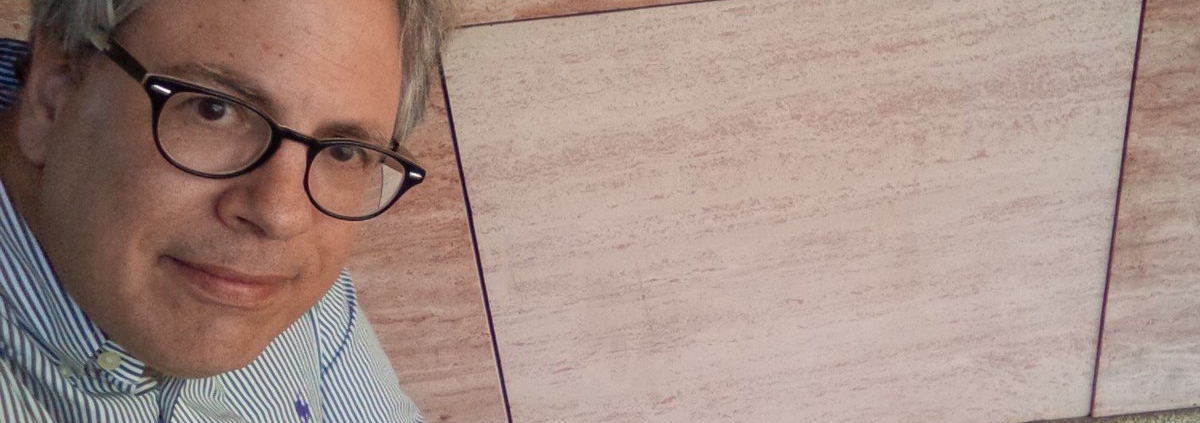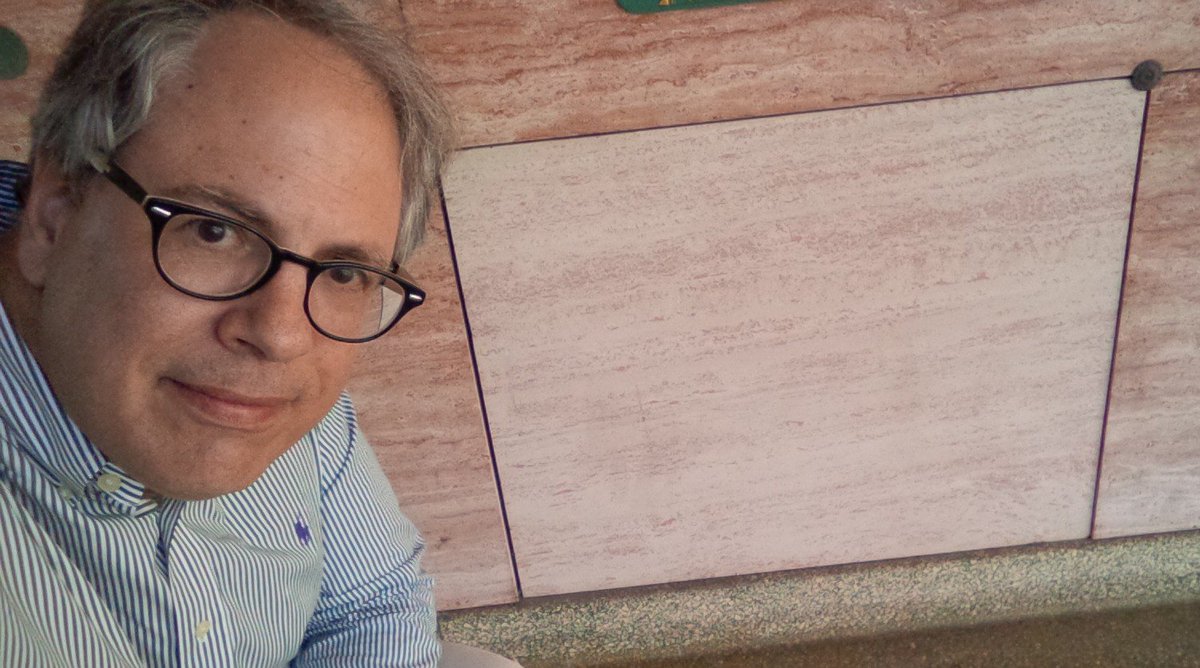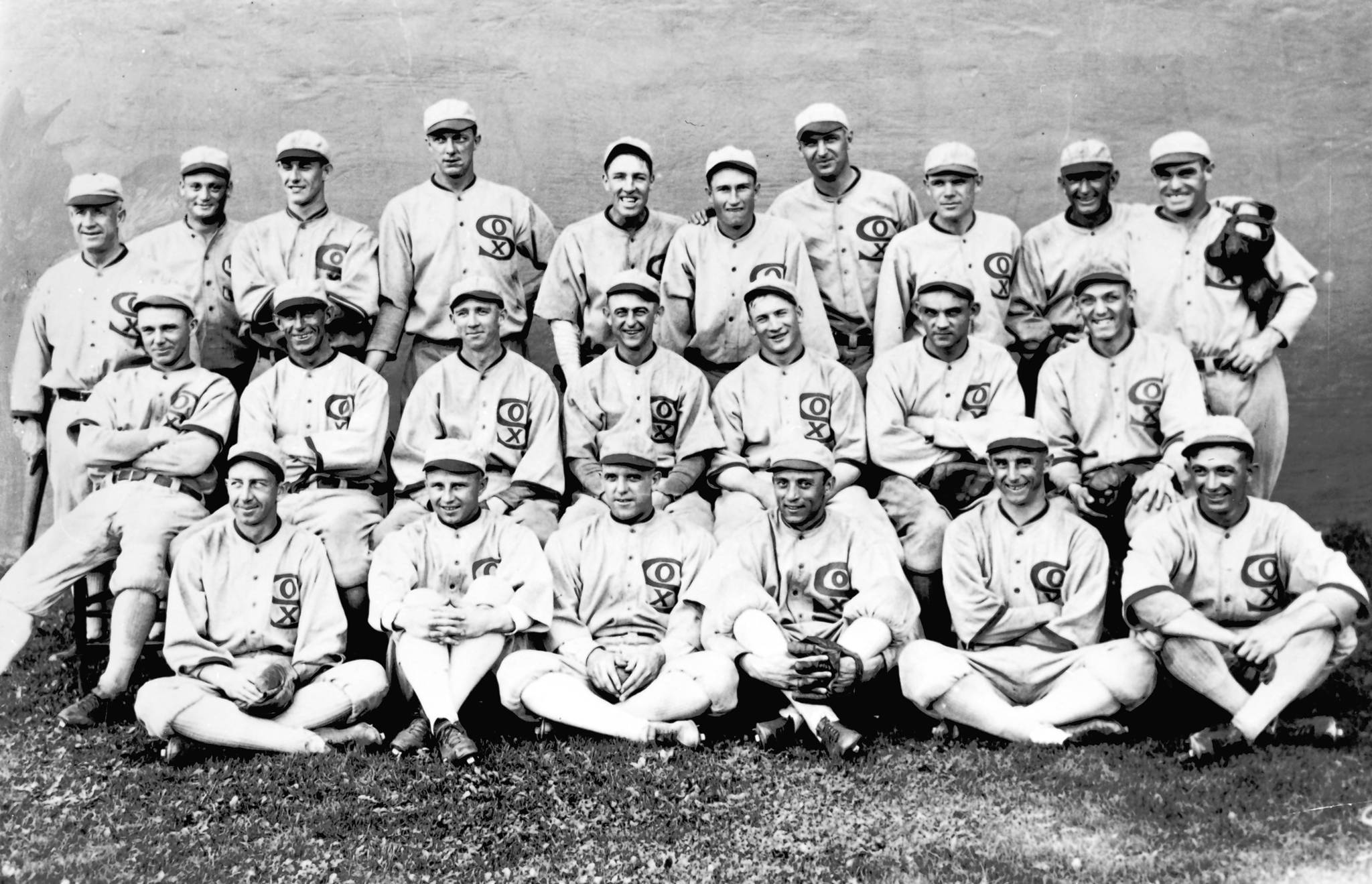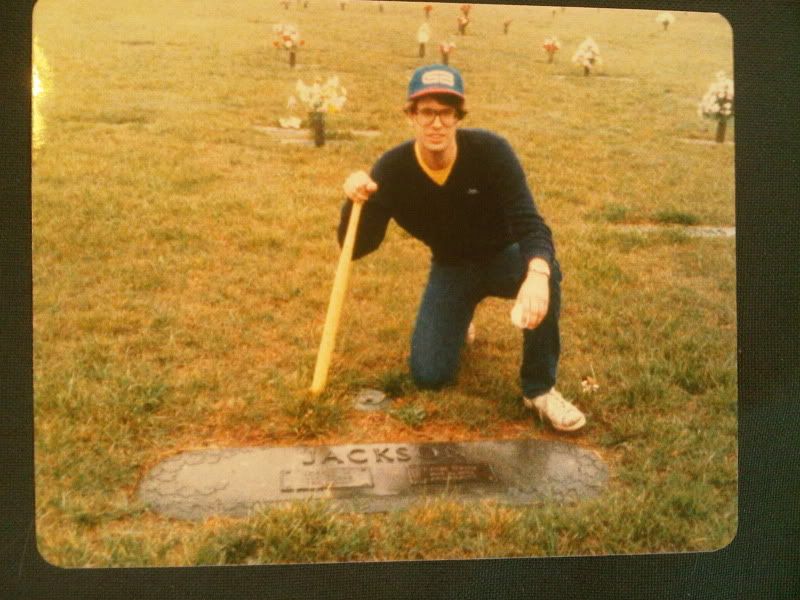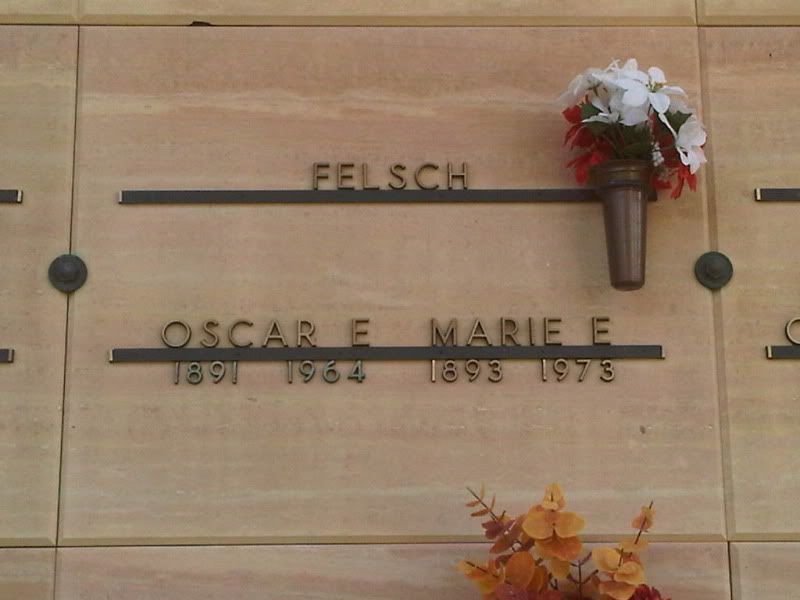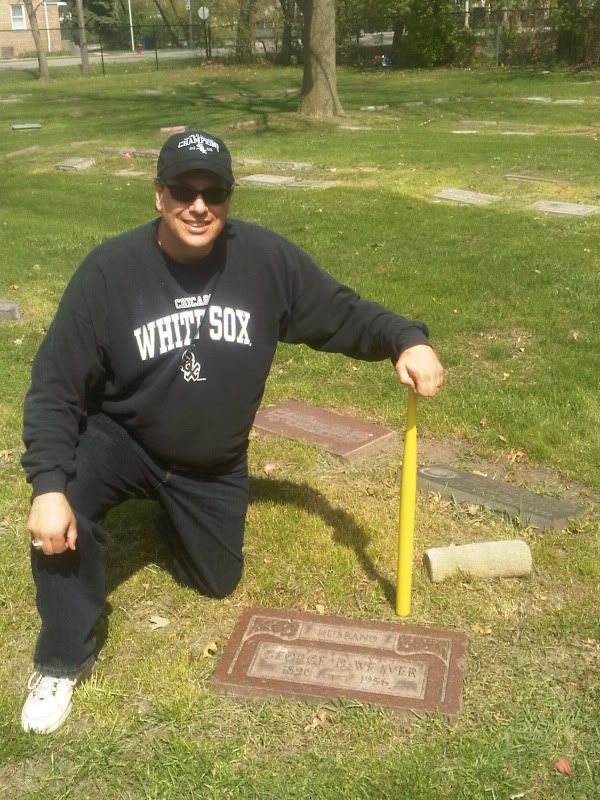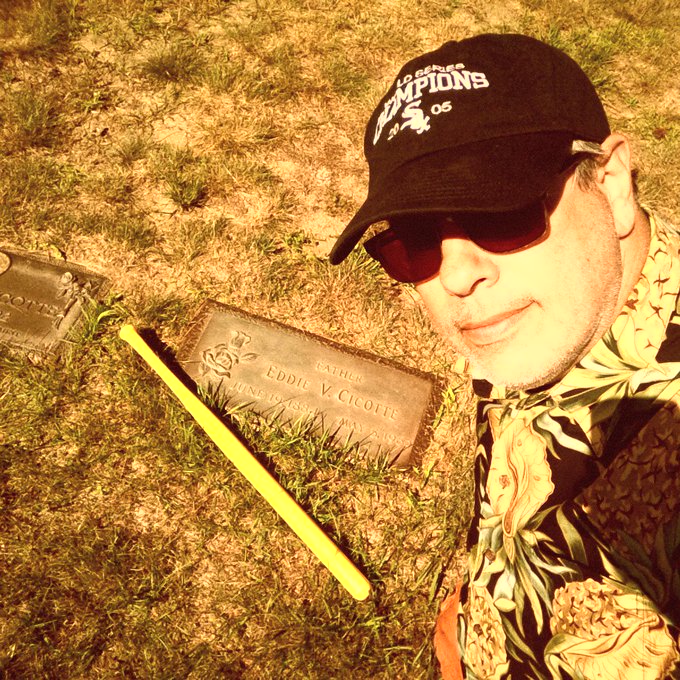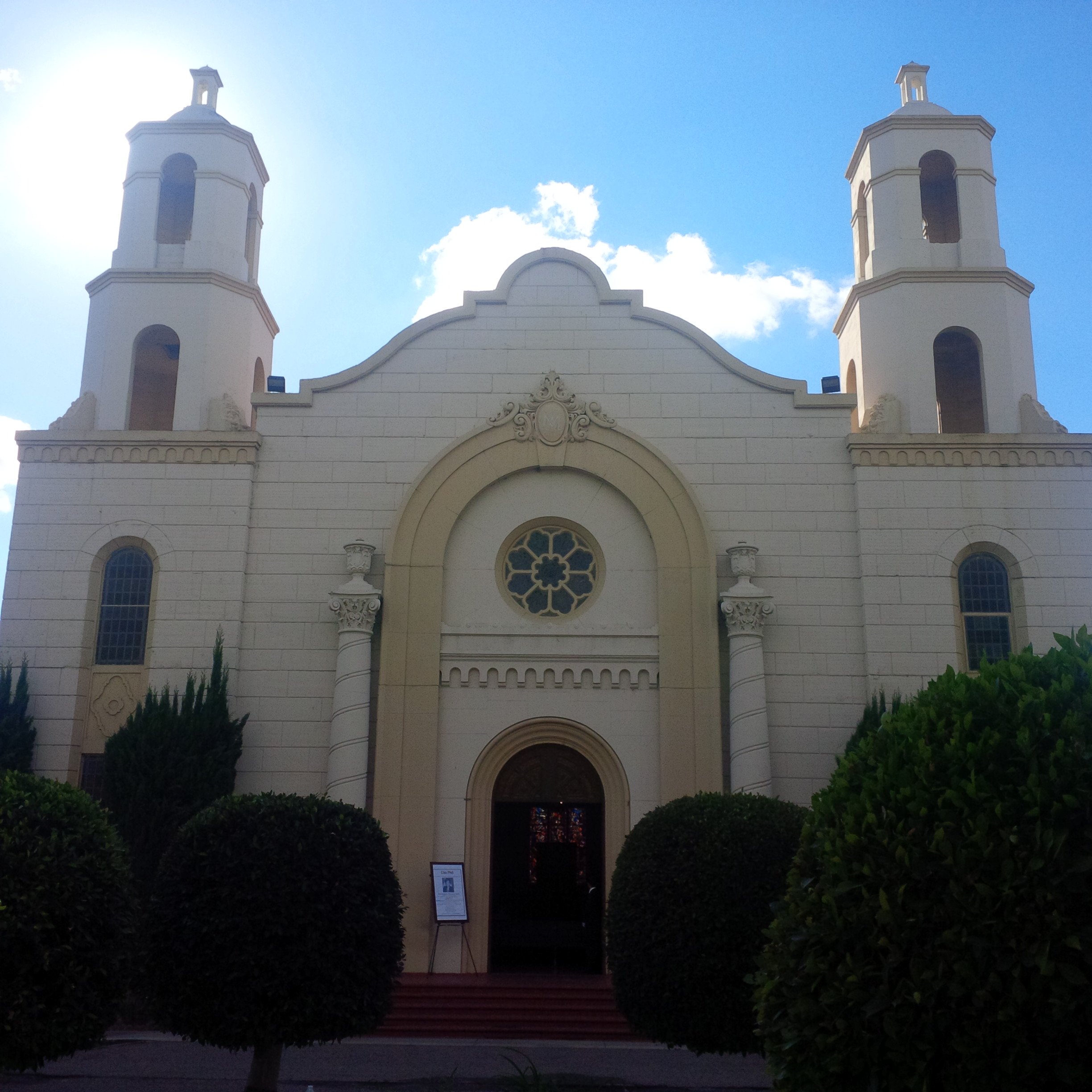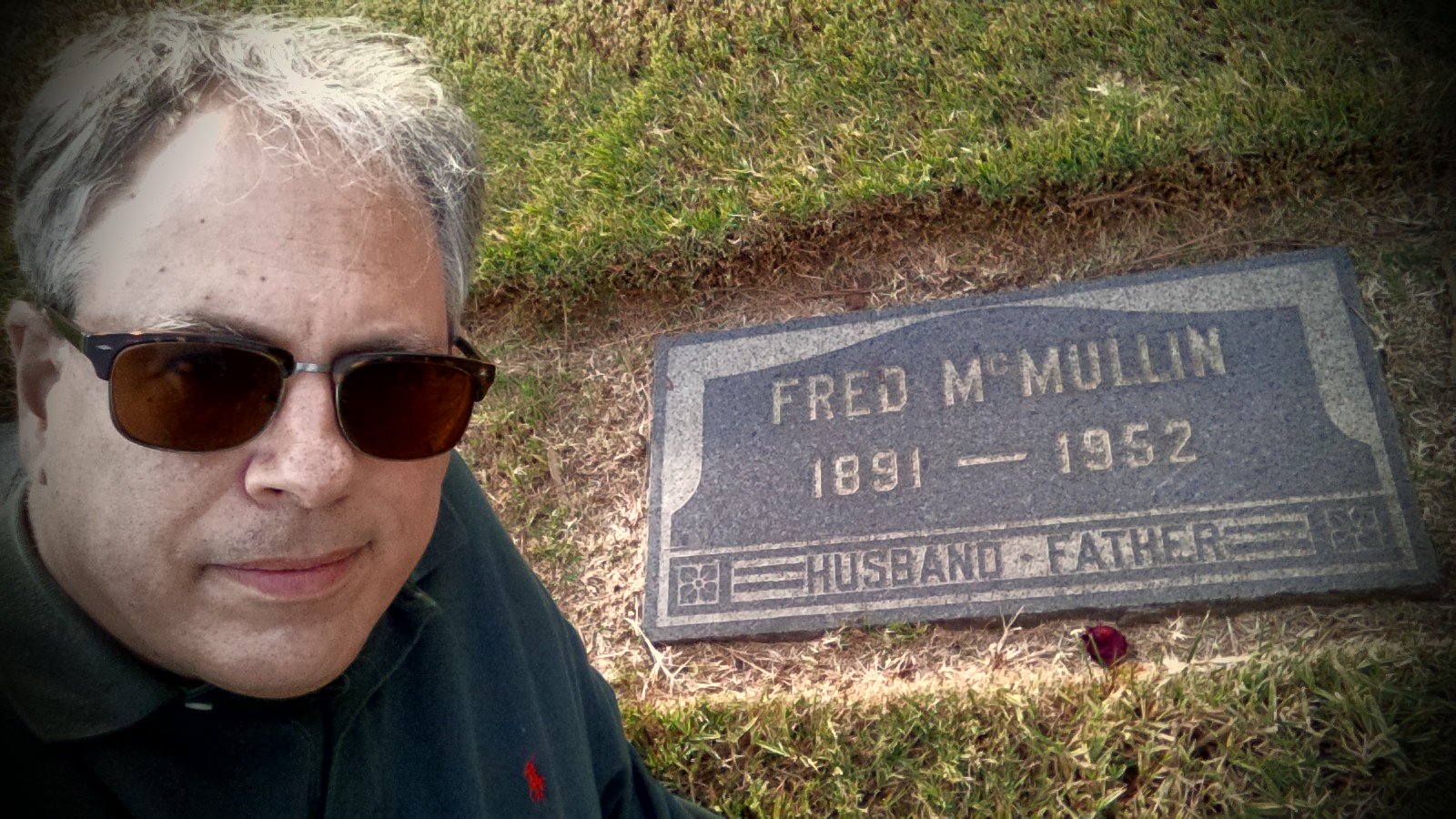A Grave Journey: In Search of the Eight Men Out
Editor’s note: This article was originally published in the December 2021 issue of the SABR Black Sox Scandal Committee Newsletter.
Peter J. Wilt, a lifelong White Sox fan and soccer executive, has solved a Black Sox mystery, discovering the unmarked grave of pitcher Lefty Williams at Melrose Abbey Memorial Park in Anaheim, California. The location of Williams’ final resting place had eluded baseball researchers until now. (Author’s collection)
I love baseball, the Chicago White Sox and history … and I am a taphophile. That is, I am a person who enjoys visiting cemeteries. In particular I enjoy searching for famous and interesting people’s graves.
These interests converged to create a personal lifetime goal to visit the graves of the Eight Men Out, the banned players from the 1919 Chicago White Sox. This is the story of my yet-to-be-completed search, a quest that is more rewarding for the journey than its eight destinations.
LEARNING ABOUT THE BLACK SOX
As a young boy, I first learned about the Black Sox sacrilege from my dad who grew up on the south side of Chicago. He was born a few years after the eight were banned. Dad was an ardent fan of the poor excuse of a baseball team that the Sox had become in the 1930s and he supported the Pale Hose through thin and thinner. His description of the banned players to me was generally sympathetic, but he made no attempt to whitewash the players’ guilt.
Later in my childhood I learned more details of the case through flawed books and motion pictures that immortalized the eight dishonorably discharged ball players. In seventh grade I read Eliot Asinof’s Eight Men Out and began to realize that it was a complicated case. The book, of course, painted the gamblers and White Sox owner Charles Comiskey as the real villains. It claimed the gamblers lured a group of mostly naive players to sell out the team’s owner who treated them poorly with low pay and broken promises. The conspiracy was painted in the book as an extension of a practice that was not uncommon during the period.
After reading Eight Men Out in 1974 and later W.P. Kinsella’s Shoeless Joe, I took the first step in my journey. I didn’t realize it would grow into a bucket list to visit all eight resting places. Nor did I realize I would also visit the graves of several supporting characters in the Black Sox Scandal, including Charles Comiskey, Kenesaw Mountain Landis, and Harry Grabiner. The journey began nearly four decades ago and is now three-quarters complete.
#1: JOE JACKSON, 1984
I started at the top with a trip in 1984 to Greenville, South Carolina, with my girlfriend, now wife, Ann, to see Shoeless Joe Jackson’s grave. It was our first vacation together and, perhaps, I may have neglected to share with her the real reason for the destination. When Ann later realized it was to see Joe’s grave, she did not complain. That’s when I knew she was the one for me.
I don’t recall all the details of the trip, but I do know we made a stop at the Bob Jones University bookstore to scoop up some unusual apparel, and we attended a Greenville Braves game in their inaugural season.
The G-Braves were managed by Bobby Dews and Leo Mazzone, who went on to become one of the best pitching coaches of the modern era. Their roster that season included six future or former major-leaguers including Zane Smith and Matt Sinatro. While I don’t recall any details of the game on the field, I do remember being served by one of the best beer vendors ever. I requested a couple of Stroh’s and the young man looked in his cooler and came up empty. I offered to take a different brand, but he insisted that he could find Stroh’s for me and turned to run beneath the stands … or maybe even across the street. Ten minutes later the gallant vendor returned with two cold cans of Stroh’s that may very well have come from a nearby liquor store.
The next day Ann and I drove to the Jacksons’ former home at 119 E. Wilburn Avenue, which was then privately owned. In 2006, the home was cut in half and transported a mile and a half to its current location, 356 Field Street, across from the Greenville Drive’s Fluor Field. In 2008 it was converted into the Shoeless Joe Jackson Museum and Baseball Library.
We then fulfilled the trip’s mission by visiting Joe’s grave at Woodlawn Memorial Park. In an age prior to FindAGrave.com I took the old-fashioned way of finding his grave by going to the cemetery office to get a map. Joe and Katie have a grass level marker in Section V, plot 333. Ann took a photo of me wearing my newly minted Greenville Braves hat, holding onto a yellow Wiffle Ball bat to commemorate the occasion.
My search for all eight Black Sox graves had achieved its first milestone without my knowledge that this would be a quest at all. That bucket list commitment wouldn’t come for nearly three decades.
In between, I returned to Greenville and Joe’s grave in 1986 and added to my Joe Jackson pilgrimage with a pair of Dyersville, Iowa, visits to pay homage to Kinsella’s baseball novel and the Field of Dreams film. But the gravesite journey didn’t pick up again or even become a personal bucket list for decades.
#2: HAPPY FELSCH, March 2012
It was in the spring of 2012 when I was reminded that Happy Felsch, “the Pride of Teutonia Avenue,” lived out his life in my adopted hometown of Milwaukee, Wisconsin. After finishing his blacklisted career playing outlaw baseball in Wisconsin, Montana, the Dakotas and Canada, he returned home and lived in a second-floor flat on Milwaukee’s northwest side. A quick Internet search showed he was interred at Wisconsin Memorial Park, just a dozen miles from my home in suburban Milwaukee. The next day, with Felsch’s final resting place data in hand courtesy of FindAGrave.com, I ventured over to the cemetery to pay my respects.
Wisconsin Memorial Park is a large cemetery with several mausoleums and beautifully kept grounds. The crypt for Felsch and his wife Marie is in “The Gardens of the Last Supper” mausoleum at the south end of the park. Before spotting Felsch’s crypt, I came upon a historic piece of statuary. I have a fondness – some would say obsession – for statues. So the serendipitous discovery of the world’s largest carving made from a single block of marble blew me away by itself. To find out this magnificent carving of the Last Supper was less than 20 feet from Felsch’s crypt was stunning.
My visit to Felsch’s crypt brought back memories of my earlier trips to see Joe Jackson’s grave. I remembered how wonderful those journeys were and that inspired me to make visiting the final resting places of all eight blacklisted White Sox players a life goal.
#3: BUCK WEAVER, April 2012
On Major League Baseball’s 2012 opening weekend, my journey continued with a visit to the only Chicago burial site of a Black Sox player. The undeservedly blacklisted third baseman Buck Weaver was buried in Mount Hope Cemetery on the far south side of Chicago.
My quest had garnered the interest of several friends who joined me, including Night Train Veeck, grandson of Baseball Hall of Famer and Chicago White Sox owner Bill Veeck. Spending time with Night Train was great fun. We share a passion for life, people, the White Sox, and finding ways to entertain people creatively. Recently, we began working together to launch Chicago House AC, Chicago’s newest professional soccer team.
Our group of seven also included Mary Kay, whose great-uncle Tony Piet followed Weaver by 15 years as the White Sox third baseman.
The FindAGrave website told us Buck had a grass level marker in Section 35. The seven of us fanned out searching for Weaver’s grave using the clue that it was “near the road.” I offered a free 7-Eleven Slurpee to the person who found Weaver’s grave first. My friend Sara, who just so happens to love Slurpees, cashed in moments after the offer was made by discovering Buck’s grave marker.
As I did at Shoeless Joe Jackson’s grave 26 years earlier, I posed with a yellow Wiffle Ball bat. After our group separated, I drove an hour to my father’s grave where I shared the news of my visit. It was a way for me to connect with my father who introduced me to the Black Sox when I was a young boy.
Three down, five to go!
#4: EDDIE CICOTTE, July 2016
My search for Eddie Cicotte’s grave in Livonia, Michigan, included a wild two-day adventure in which I attended four soccer matches and visited three famous graves in three different states. On July 22, 2016, I drove from Chicago to Grand Rapids for the NPSL Midwest Regional Semifinals at Houseman Field. The first game saw Cleveland AFC defeat Ann Arbor and then my Indy Eleven-affiliated amateur team fell to the host Grand Rapids FC in front of nearly 7,000 fans.
Early the next morning, I began an epic day by visiting the Grand Rapids graves of Dick York, the original (and better) Darrin Stephens actor from TV’s Bewitched, and Lou Gehrig’s predecessor Wally Pipp. A little-known fact about Pipp is that he scouted Gehrig at Columbia University and recommended his eventual replacement to Yankees manager Miller Huggins. York is in Plainfield Cemetery and Pipp is in Woodlawn Cemetery. From there I was off to Livonia to visit the grave of Eddie Cicotte, the great knuckleball pitcher and ball doctor (shine, emery and spitter).
Livonia is a 2½-hour drive from Grand Rapids. FindAGrave directed me to Section 79 of Parkview Memorial Cemetery for Eddie’s final resting place. It didn’t take long to find his grass level flat grave marker. I took pictures with the yellow Wiffle Ball bat and, in this case, a 2005 White Sox World Series hat.
I am a huge fan of the meat pie known as a pasty. They are indigenous to Cornwall, England, but were popularized in US mining communities including Michigan. After a short visit with the great but flawed Sox pitcher, I lunched at Superior Pasties in Livonia, the only Top 10 Pasty Shop (according to USA Today) in Michigan’s lower peninsula. The other nine are in Michigan’s Upper Peninsula. The delicious pasty fueled my long drive to Cincinnati for FC Cincinnati’s 2-0 victory over their USL rival Louisville City FC. I had to leave that match at the half to make it to Indianapolis in time to see my Indy Eleven beat FC Edmonton 1-0.
I slept well that night knowing I was halfway through my search for the Eight Men Out.
#5: CLAUDE “LEFTY” WILLIAMS, November 2016
A new work assignment put me in Southern California often in late 2016 which allowed me opportunities to seek out two more Black Sox graves. The first was the holy grail of Black Sox graves, the unmarked grave of Claude “Lefty” Williams. As far as I know, the exact location of Williams’ ashes has been unknown to the general public until now.
I had been retained by two organizations in Orange County and San Diego to help them launch new pro soccer teams. In November, I made my first visit to Melrose Abbey Memorial Park in Anaheim to find, or at least be near, the unmarked grave of Williams, the young Black Sox left-hander. In April 2012 I had exchanged emails with the cemetery’s sales manager, Dee Zrinski, who politely refused my impassioned plea for her to disclose the location of Lefty’s grave, which was left unmarked at the family’s request when he died and was cremated in 1959.
I assumed I would have no more luck in person and just intended to drive around the cemetery, so I could say I was close to Lefty’s grave. When I arrived, I went to the office and spoke with the administrator on duty. I sheepishly told her about my quest and that I understood she may not be able to disclose the location of Lefty’s resting place. When she apologized for not being able to disclose the location, I didn’t press the issue. Instead, I thanked her for hearing me out and asked her about the location of Addams Family and King Creole actress Carolyn Jones’ crypt.
The woman directed me to the nearby North Patio Mausoleum and told me Carolyn’s crypt was in the bottom row (46 gg) with a picture of her leaning against the crypt. I thanked her, turned, and began to walk away when she called me back. She paused and then in a stage whisper said, “When you’re at Carolyn Jones’ crypt, you will be VERY, VERY close to Mr. Williams.” There was only one unmarked crypt near Carolyn Jones’ crypt, so I assume this is Lefty Williams final resting place.
After Lefty Williams died in 1959, his wife Lyria had him cremated and quietly interred in an unmarked crypt at Melrose Abbey Memorial Park in Anaheim, California. The location of the Black Sox pitcher’s grave has remained a mystery for many years, with cemetery officials reluctant to reveal any information to researchers who have inquired about the former White Sox pitching star. (Author’s collection)
#6: FRED McMULLIN, December 2016
The following month I was back in the Los Angeles area for work and made plans to find the grave of Fred McMullin, the least well-known of the Black Sox.
Fred is in Inglewood Park Cemetery, just a few miles east of Los Angeles International Airport.
Like Fred’s career, his grave is unremarkable, a simple, grass level marker with his name, birth and death years and his role as a husband and a father. Like many area cemeteries, Inglewood Park is the burial place of many, many celebrities. Baseball players buried there include Earl Battey, Wally Berger, Lyman Bostock, Al Cowens, Doc Crandall, “Wahoo Sam” Crawford, Dock Ellis, Curt Flood, Junior Gilliam, Lee Maye, and Irish Meusel. Entertainers at Inglewood Park include Chet Baker, Edgar Bergen, Ray Charles, Ella Fitzgerald, Betty Grable, Etta James, Gypsy Rose Lee, Billy Preston, Cesar Romero and Buckwheat Thomas. O.J. Simpson’s attorneys Johnnie Cochran and Robert Kardashian are both there, as well.
I was on a tight schedule, so the only other celebrity grave I visited there was Minnesota Twins and California Angels outfielder Lyman Bostock who was murdered in Gary, Indiana, just hours after playing a game against the Chicago White Sox at Comiskey Park.
#7: CHICK GANDIL, TBD
#8: SWEDE RISBERG, TBD
I don’t know when, how, or even IF I will visit the graves of Black Sox ringleader Chick Gandil and shortstop Swede Risberg. They are both in northern California, but one will be easier to visit than the other.
Chick’s grave is in Napa, just a short drive from the Bay Area. At some point I hope to find myself in San Francisco, Oakland, or San Jose on business or pleasure, which will allow that box to be checked.
Finally, as Joe Jackson said, “The Swede is a hard guy.” And he will be a hard guy to visit. The youngest of the Black Sox, just 24 years old in 1919, Risberg is buried in Mount Shasta, California, near the Oregon border, about four hours north of Napa. Mount Shasta isn’t near any place I would normally be traveling, so it won’t be a short detour off an otherwise planned trip. My guess is I will someday visit Swede’s grave on the same day I visit Chick’s.
I don’t know what other sites I will see, meals I will eat, or people I will meet as I complete the quest to visit the Eight Men Out. I do know that I will enjoy the journey.
PETER J. WILT is a SABR member and an avid Chicago White Sox fan. When not cheering for the White Sox he is launching and operating professional soccer teams. He is currently operating Chicago House AC and has launched eight other teams including MLS’ Chicago Fire and NWSL’s Chicago Red Stars.


